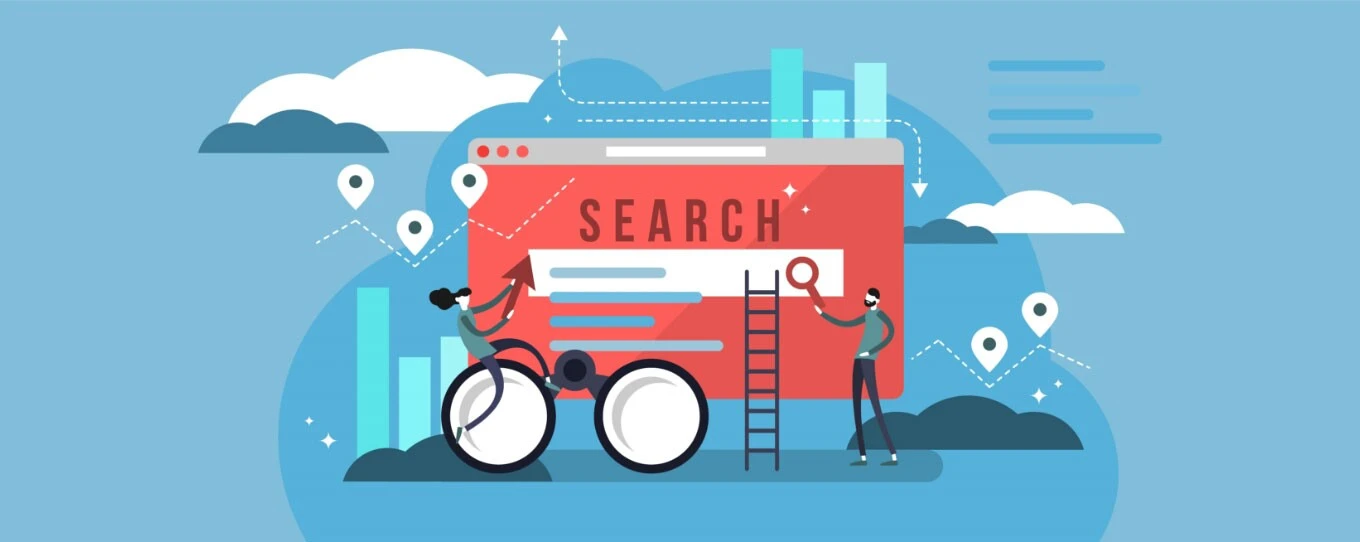Tips for Increasing Ecommerce Sales

Increase Ecommerce Sales With These 15 Tips
- Include High Quality, Detailed Product Images
- Focus On User Experience
- Ensure The Site Loads Fast & Has An SSL Certificate
- Highlight Customer Reviews And Trust Signals
- Reduce The Number Of Steps In Your Checkout Process.
- Design with a “Mobile First” approach
- Include Related Products/Accessories
- Run Flash Sales
Online shopping has been an increasingly popular option for shoppers over the past 15 years, continuing to increase in volume dramatically during this time. Many businesses are choosing to work in a traditional brick and mortar storefront coupled with an online store to diversify their selling avenues, while others are choosing eCommerce as their only selling option.
Selling products online does increase the potential audience in which you can sell your products to, but that doesn’t mean that there is any shortage of vicious competition. Considering how easy it is to create eCommerce websites with the help of platforms such as Shopify and open-source software such as WooCommerce, entrepreneurs and other do-it-yourself owners can create online stores themselves.
These amazing eCommerce platforms have empowered business owners with diverse functionality and easy setup options, yet many miss the mark when it comes to creating a truly marketable eCommerce website which sells products. These 15 eCommerce tips will help eCommerce businesses audit their own website and make improvements which will result in more conversions and sales online.
Include High Quality, Detailed Product Images
Considering the immense popularity of social media platforms such as Instagram and Pinterest – People shop with their eyes first before anything else. It’s absolutely vital that product images are in a super high resolution and demonstrate the product on it’s own (ideally with a transparent/white background) and actually being used (such as lifestyle images with people).
Products should include a number of photos, ideally three or more, to clearly depict the product and its use. It is also important to include an image which highlights the dimensions of the product should that be of importance, people are likely to review the products specifications through an image rather than through plain text in a description box.
Focus On User Experience
As with any successful business, the customer experience is a primary focus which drives success. This is no different when building an eCommerce brand and attempting to gain valuable market share.
eCommerce businesses should offer easily accessible contact information, FAQs, navigation and more to ensure there is no frustration or uncertainty around each product. It’s important to highlight clearly the features of the product, the process of postage/shipping and expected delivery times and detailed information such as return/exchange/privacy policies.
The aim of any successful eCommerce business is to make purchasing products as simple as possible while maintaining a high level of customer satisfaction.

Ensure The Site Loads Fast & Has An SSL Certificate
Website load times can be the make or break for eCommerce websites, with any delays being detrimental to the customers likelihood of purchasing. Not only does it demonstrate the brand as a less professional competitor, it also damages the customer experiences and increases bounce rates – all things which hurt the bottom line.
Websites should be hosted in the location of their primary audience, for example, if an eCommerce business is operating out of Sydney, Australia and is selling Australia wide, it’s important that the website hosting server be located in Australia, even better in Sydney itself. This will ensure a faster load time compared to similar server specifications located overseas. For even faster website loading speeds, cloud based hosting such as AWS and Microsoft Azure can be considered which will provide the fastest possible load times currently available – although you might need an experienced developer to set this up correctly.
Every eCommerce website should have an SSL Certificate installed to ensure that there are no website errors and payment gateway providers such as Stripe and PayPal will work correctly. Without a valid SSL Certificate, users will see an error in the URL bar of their browser and are much less likely to purchase, if at all. For Shopify eCommerce websites, an SSL Certificate is included in the monthly fee.
Highlight Customer Reviews And Trust Signals
Everyone loves a good review, especially when it’s directly related to the product they’re considering purchasing. Positive customer reviews in relation to specific products and the brand/customer experience itself will greatly increase the likelihood of shoppers purchasing products online. Shoppers love to know what others think about certain products and they take these reviews seriously, which is why every eCommerce store should promote their positive reviews/star rating and encourage happy customers to leave their own review, creating a snowball effect.
There are many plugins/options available to eCommerce brands which help boost their product reviews visibility and in turn increase sales through validation of products by other customers. These can be added to homepages or other products themselves.
Take for instance eBay or Amazon – Their review system of sellers accounts is one of the main reasons customers trust purchasing from them.
Reduce The Number Of Steps In Your Checkout Process.
Shoppers are impulsive. They will purchase a product quickly if they are immediately satisfied with the website, customer experience, price and product. Online shoppers also have a variety of competitors to choose from for any given product, which is why ease-of-purchase can be the difference between winning and losing.
It could be as simple as having one extra step in your checkout process which could deter an eager customer. eCommerce websites should implement the easiest possible checkout flow which includes options for instant and guest checkout (ask them to create an account after purchasing instead, once the impulse is satisfied).
Another great example of this is eBay’s “Buy Now” button, a strong call to action which tells the customer that they can make a purchase of this product immediately and easily.
Provide Lots Of Payment Options
Following on from shoppers’ impulsive buying behaviour mentioned above, it’s crucial that eCommerce businesses offer their customers as many payment options as possible, providing them with all possible payment channels and credit options.
Over the past 5 years, services such as Afterpay and ZipPay have become vital in an eCommerce businesses strategy to convert visitors into paying customers. It’s evident in the recent business acquisition by Square of AfterPay for $39 Billion AUD that it’s an important strategy for retailers in making sales and will continue to be so into the future.
Another great example of this is eBay’s “Buy Now” button, a strong call to action which tells the customer that they can make a purchase of this product immediately and easily.

Communicate With Your Audience on Social Media
Social media is powerful, very powerful. Every modern business should consider and implement a social media marketing strategy, based on paid advertising and scheduled content creation to engage with their audience and promote their brand.
Utilizing the reach and influence of social media can help boost the audience your product reaches and hashtag trends, along with influencer marketing can build a passionate community which will propagate online.
Utilise Remarketing Campaigns
Remarketing campaigns refer to advertisements which are targeted to a specific audience of people who have already interacted with your website. Have you ever noticed when looking at a website online, that advertisements from that same website begin appearing in your Facebook feed? This is a remarketing advertising tactic.
Common remarketing campaigns include Google Display ad campaigns and Facebook Campaigns and are a really powerful way to improve the effectiveness of advertisements and improve conversions.
These campaigns are set up by adding certain code snippets to a website (such as Google Ads Remarketing Tag or Facebook Pixel) which feed information back to the platform. Learn more about Facebook Pixel and Google Ads Remarketing.
Free Shipping on all products
Shipping is a very important cost to consider when starting a successful ecommerce store, but there’s certain ways you can charge your customers which will change the way they see your products. If you’ve ever shopped online (and there’s a very high possibility that you have) you’ll notice that most online stores advertise “Free Shipping” on their products. Obviously, the actual shipping costs are not free but have instead been included in the price of the product itself.
This is an important and very common option for online businesses especially when competing with one another. The customer’s perception of the product will become less desirable if they see a separate line at checkout which states a shipping cost and is likely to challenge their decision to purchase, often for the worse.
Optimise Your Website For On-page SEO
All avenues of online and traditional marketing should be considered when looking to build a customer base for your online brand – which puts Search Engine Optimization front and centre as a primary digital marketing strategy.
Search Engine Optimisation is considered in two parts: on-page and off page optimizations. While off-page optimisations can provide great ranking results if done correctly, the first step is to fully optimise your website for on-page SEO. This includes adding information to your website files which targets specific keywords related to your products and industry, such as:
- H1 Tags
- Image Alt Text
- Keyword usage in body content
- Title Tags
- org header information
- Website UI/UX design (to reduce bounce rate and improve time on page)
- Website load times
- Mobile Optimizations
- SSL Certificates
- Core Vitals Optimisations
- Domain name
- External Linking
- Actual Valuable Text Content/Products
- Relevant Blog Posts

Online businesses should implement the above points as a form of free digital marketing, but can also engage digital marketing agencies to implement on and off page optimizations.
Design with a “Mobile First” approach
Online shoppers (and internet users in general) are going mobile and have continued to do so at an increasing rate over the past 10 years (with no end in site). Advancements in mobile phone technology and mobile networks (not to mention the ease of use/access) have pushed users to shift towards their phones for surfing the web and making online purchases. For this reason, modern websites must be fully mobile optimised and should focus on a seamless user experience. Shoppers these days are used to working with properly mobile optimised websites and if they come across one that isn’t, they’re unlikely to purchase from or trust the site at all.
Include Related Products/Accessories
Good eCommerce website design includes related products or accessories wherever possible to spark a customer’s interest in similar products and increase sales. You’ll often see related products at the bottom of a products page on popular eCommerce sites.
Run Flash Sales
Buyers love a sale (who doesn’t?), which is why it’s important to run a flash sale from time to time to build urgency amongst your customer base and increase sales. This can be a great way to urge customers to make purchases because they believe they’re going to miss out on an amazing deal otherwise. This also makes for a good marketing campaign strategy and can help change up the types of advertisements which are being run.
Implement Live Chat
Live chat can be a great way to interact with your customers in real time, answering their questions and helping them trust your brand. Live chat has been an increasingly popular feature for many different types of websites, not just eCommerce websites. Live chat can help users with customer service queries, sales queries and much more.
There are a lot of different live chat options which might be useful for your online store, such as the facebook messenger plugin which is linked to a business facebook account and offers a web interface.
When businesses are operating as an online seller, any opportunities to build trust amongst their customers can be immensely valuable and live chat should be considered as part of this strategy.
Send Regular EDMs & Have a Mail Signup
As most online shoppers would know, email marketing is a heavily used technique for customer interaction. Take eBay for example, they send regular EDMs (Electronic Direct Mail) to highlight different sales and products available on their platform. This can be a powerful marketing tool for online retailers.
EDM services such as MailChimp can be free to use up to a certain level and is a great way to start utilizing newsletter signupsl (and other customer data).
Conclusion
In conclusion, any serious online seller should consider & implement the above website features in order to make the most sales online and build a recognisable and profitable brand.
Our team is experienced in eCommerce website design and development on both the WooCommerce and Shopify platforms. Contact Us to have a chat about your eCommerce website!






